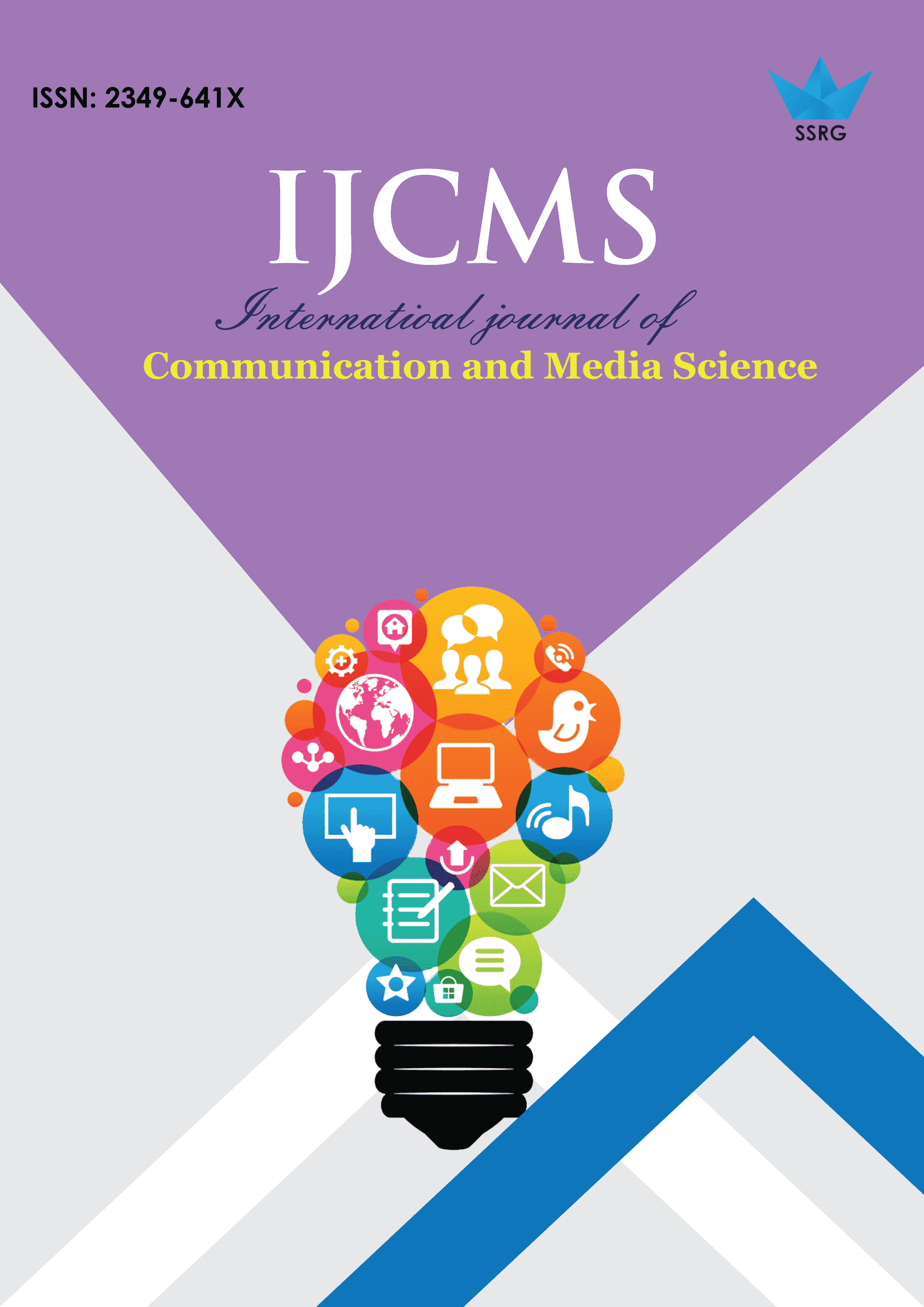Twitter & Democracy: Is Twitter a Tool for Two-Way Political Dialogue or Has it Turned into a Platform for Trolling and Propaganda?

| International Journal of Communication and Media Science |
| © 2018 by SSRG - IJCMS Journal |
| Volume 5 Issue 2 |
| Year of Publication : 2018 |
| Authors : Apoorva Ravi |
How to Cite?
Apoorva Ravi, "Twitter & Democracy: Is Twitter a Tool for Two-Way Political Dialogue or Has it Turned into a Platform for Trolling and Propaganda?," SSRG International Journal of Communication and Media Science, vol. 5, no. 2, pp. 7-10, 2018. Crossref, https://doi.org/10.14445/2349641X/IJCMS-V521P102
Abstract:
Social media platforms have become an inseparable part of Indian metropolitan society and are essential tools of self-expression. Micro-blogging through Twitter has gained participants from the general public to public figures like politicians, personalities from creative industries, sports and others. How has this helped the citizens connect with their representatives? Has it strengthened democracy by creating an open, two-way communication between the citizens and their representatives? Or, has it become a platform for dumping propagandist messages on the citizens? Or worse, turned into a trolling platform - scaring people who take a step towards effective dialogue? This paper aims to answer these questions through the content analysis of Twitter profiles of five prominent political figures of the country using purposive sampling technique. A qualitative approach to understand the problem at the micro level has been employed. During the course of analysis, the two-way symmetric model of communication (as given by Gruning in Excellence theory) has been utilized. It acts as a base to analyze the communication patterns between the political figures and the citizens. The theory has been used to label the communication patterns as positive dialogue, propaganda or trolling. The findings of the study can act as a basis for public representatives and their communication spokesperson to improve their dialogue with the masses.
Keywords:
Twitter, Democracy, Micro-blogging, Two-way symmetric model of communication, Excellence theory, Propaganda, Trolling.
References:
[1] Jowett, Garth S.; O'Donnell, Victoria (2006). Propaganda and Persuasion (4th ed.). Thousand Oaks, California: Sage Publications, Inc. ISBN 1-4129-0897-3.
[2] Park, C. S. (2013). Does Twitter motivate involvement in politics? Tweeting, opinion leadership, and political engagement. Computers in Human Behavior. Retrieved August 25, 2017, from http://www.sciencedirect.com/science/article/pii/S0747563213000472
[3] Chen, G. M. (2011). Tweet this: A uses and gratifications perspective on how active Twitter use gratifies a need to connect with others. Computers in Human Behavior. Retrieved August 25, 2017, from http://www.sciencedirect.com/science/article/pii/S0747563210003213
[4] Zheng, & Zuniga. (2014). Social media news use has direct effects on offline political participation and indirect effects on offline and online political participation mediated via political expression. Retrieved August 25, 2017, from http://onlinelibrary.wiley.com/doi/10.1111/jcom.12103/full

 10.14445/2349641X/IJCMS-V521P102
10.14445/2349641X/IJCMS-V521P102